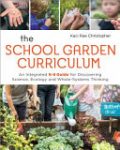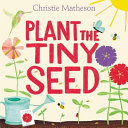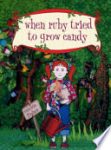Listed below are selected teacher resources, picture books, fiction, and non-fiction related to seeds and gardening.
Teacher Resources
by Ann Watts
Grades: Preschool-6
A garden can be a magical place for young children and offers them rich and engaging learning experiences as they interact with a variety of plants and wildlife throughout the year. This book guides you through the process of creating a garden, however small, for young children. It looks at the impact a garden area can have on children’s overall development and the benefits of using natural materials as learning tools.
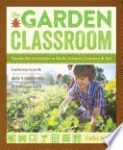 The Garden Classroom : Hands-on Activities in Math, Science, Literacy, and Art
The Garden Classroom : Hands-on Activities in Math, Science, Literacy, and Art
by Cathy James
Grades: Preschool-6
Every garden offers children a rich, sensory playground, full of interesting things to discover and learn about. There’s a whole lot of science happening right before their eyes. The garden can also be a place to develop math and literacy skills, as the outdoors offers up plenty of invitations to weave learning into everyday gardening. The garden classroom is a place where plants grow, and where children grow too.
by Kaci Rae Christopher
Grades: K-8
The School Garden Curriculum offers a unique and comprehensive framework, enabling students to grow their knowledge throughout the school year and build on it from kindergarten to eighth grade. From seasonal garden activities to inquiry projects and science-skill building, children will develop organic gardening solutions, a positive land ethic, systems thinking, and instincts for ecological stewardship.
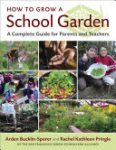 How to Grow a School Garden: A Complete Guide for Parents and Teachers
How to Grow a School Garden: A Complete Guide for Parents and Teachers
by Arden Bucklin-Sporer and Rachel Kathleen Pringle
Grades: K-8
Today both schools and parents have a unique opportunity—and an increasing responsibility—to cultivate an awareness of our finite resources, to reinforce values of environmental stewardship, to help students understand concepts of nutrition and health, and to connect children to the natural world.
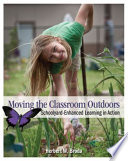 Moving the Classroom Outdoors: Schoolyard-enhanced Learning in Action
Moving the Classroom Outdoors: Schoolyard-enhanced Learning in Action
by Herbert W. Broda
Grades: K-8
Designed to provide teachers and administrators with a range of practical suggestions for making the schoolyard a varied and viable learning resource, Moving the Classroom Outdoors presents concrete examples of how urban, suburban, and rural schools have enhanced the school site as a teaching tool.
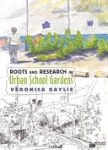 Roots and Research in Urban School Gardens
Roots and Research in Urban School Gardens
by Veronica Gaylie
Grades: K-12
Through a comprehensive history of school garden practice rooted in Eastern industrial cities, to case studies from four Pacific Rim regions, this book examines the practice and culture of the urban school garden as a central symbol for environmental learning. As poetically described by students, teachers, and community members in both historical and contemporary gardens, the story of the urban school garden inspires a new narrative in connecting learners to the land.
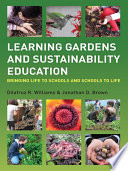 Learning Gardens and Sustainability Education: Bringing Life to Schools and Schools to Life
Learning Gardens and Sustainability Education: Bringing Life to Schools and Schools to Life
by Dilafruz R. Williams and Jonathan D. Brown
Offering a fresh approach to bringing life to schools and schools to life, this book goes beyond touting the benefits of learning gardens to survey them as a whole-systems design solution with potential to address myriad interrelated social, ecological, and educational issues.
Picture Books
by Jordan Scott & Sydney Smith
Grade Level: Preschool-2
A young boy spends his mornings with his beloved Baba, his grandmother. She doesn’t speak much English, but they connect through gestures, gardening, eating, and walking to school together. Marked by memories of wartime scarcity, Baba cherishes food, and the boy learns to do the same. Eventually, Baba needs to move in with the boy and his parents, and he has the chance to care for her as she’s always cared for him.
by Christie Matheson
Grade Level: Preschool-3
Beautiful collage-and-watercolor art follows the seed through its entire life cycle, as it grows into a zinnia in a garden full of buzzing bees, curious hummingbirds, and colourful butterflies. Children engage with the book as they wiggle their fingers to water the seeds, clap to make the sun shine after rain, and shoo away a hungry snail.
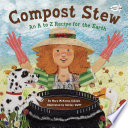 Compost Stew: An A to Z Recipe for the Earth
Compost Stew: An A to Z Recipe for the Earth
by Mary McKenna Siddals ; illustrated by Ashley Wolff
Grade Level: Preschool-3
Kids everywhere are seeking knowledge about the environment and climate change. Not only is composting becoming more common in households and residential gardens, but many school gardens feature compost piles, too. But how do you start a compost pile? What’s safe to include? Perfect for an Earth Day focus or year-round reference, this inviting book provides all the answers for kids and families looking for simple, child-friendly ways to help the planet.
by Valorie Fisher
Grade Level: Preschool-3
Ruby Louise Hawthorne can’t believe her eyes. Right there, in Miss Wysterious’s garden, teacups are growing on trees, shoes are sprouting like weeds, and eggbeaters are jangling from branches. So maybe Ruby should listen when Miss Wysterious tells her all the important rules of gardening–like watering and weeding and labelling what you plant. That way, when Ruby plants her jellybeans, they really just might grow.
 Garden Wonders: A Guidebook for Little Green Thumbs
Garden Wonders: A Guidebook for Little Green Thumbs
by Sarah Grindler
Grade Level: K-2
Whether you have a big backyard or pots on a balcony, you can grow just about anything if you have healthy soil, plenty of water, and bright sunlight. The newest book in the Little Explorers series takes young readers through every step to creating their own garden: from collecting nutrient-rich soil and choosing the right time of day to water your plants, to identifying helpful critters from unwanted pests. Featuring new vocabulary words like “germinate,” “fertilizer,” and “pollinator,” and encouraging a microscopic look at nature, this is the perfect book for curious little gardeners.
 One Little Lot: The 1-2-3s of an Urban Garden
One Little Lot: The 1-2-3s of an Urban Garden
by Diane C. Mullen; illustrated by Oriol Vidal
Grade Level: K-3
Count all the ways (one to ten) an urban community unites to clean up an abandoned lot. From building planter boxes to pulling weeds to planting seeds, everyone works together to transform the lot into a bountiful vegetable garden. As the garden grows, strangers become friends, eventually sharing in a special feast with the harvest they grew.
by Mélina Mangal; illustrated by Ken Daley
Grade Level: K-4
Amidst all the buildings, people, and traffic in his neighborhood, Jayden sees nature everywhere: the squirrels scrounging, the cardinals calling, and the dandelions growing. But Mama doesn’t believe there’s nature in the city. So Jayden sets out to help Mama see what he sees. With the help of his friend Mr. Curtis, Jayden plants the seeds of a community garden and brings together his neighbors–and Mama–to show them the magic of nature in the middle of the city.
by Helen Mortimer & Katie Cottle
After Omar shares his mum’s honey cake and stories of his grandpa’s beekeeping for show-and-tell, the class decides to support local bees by leading their community in planting wildflowers. As Maisie and Omar’s friendship grows, so too do the flowers. By summer, their neighbourhood has become a bee corridor and the class has honey to share. Teaching resources are available through Owlet Press.
Non-Fiction
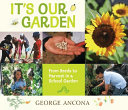 It’s Our Garden: From Seeds to Harvest in a School Garden
It’s Our Garden: From Seeds to Harvest in a School Garden
by George Ancona
Grades: Preschool-3
At an elementary school in Santa Fe, the bell rings for recess and kids fly out the door to check what’s happening in their garden. As the seasons turn, everyone has a part to play in making the garden flourish. From choosing and planting seeds in the spring to releasing butterflies in the summer to harvesting in the fall to protecting the beds for the winter.
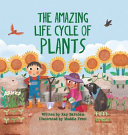 The Amazing Life Cycle of Plants
The Amazing Life Cycle of Plants
written by Kay Barnham; illustrated by Maddie Frost
Grades: Preschool-3
How do plants grow? Explore the journey from seed to sapling and beyond. Children have lots of questions about the world around them, and this book helps them discover many amazing and wonderful scientific facts about nature.
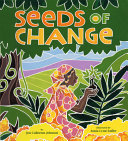 Seeds of Change: Planting a Path to Peace
Seeds of Change: Planting a Path to Peace
written by Jen Cullerton Johnson; illustrated by Sonia Lynn Sadler
Grades: 1-6.
A biography of Kenyan Nobel Peace Prize winner and environmentalist Wangari Maathai, a female scientist who made a stand in the face of opposition to women’s rights and her own Greenbelt Movement, an effort to restore Kenya’s ecosystem by planting millions of trees.
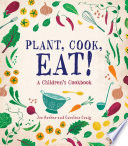 Plant, Cook, Eat!: A Children’s Cookbook
Plant, Cook, Eat!: A Children’s Cookbook
by Joe Archer and Caroline Craig
Grades: 2-5.
For beginners and green-thumbed foodies, this unusually all-inclusive garden-to-kitchen cookbook is part lesson in gardening and part collection of healthy, delicious, kid-friendly recipes.
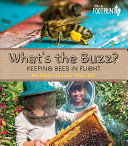 What’s the Buzz? Keeping Bees in Flight
What’s the Buzz? Keeping Bees in Flight
by Marie-Ellen Wilcox
Grades: 5-7
What’s the Buzz? Celebrates bees and encourages readers to do their part to keep the hives alive. This book belongs to the Orca Footprints series for middle readers, which answers children’s questions about the state of the natural world, resource sustainability, and how to be global citizens. See also the Orca Footprints Guide, which includes ideas on how to present and use these books.
Finding More Resources
To find more resources in this area, try the following:
- Search using the General tab on the UBC Library website to look for material in all UBC Library branches.
- Search using “Search Education Resources” box in the left hand bar on the Education Library website to limit your results to materials in the Education Library.
- Use specific search terms to narrow your results, such as “garden”, “seeds”, “plants”, or “school garden”.
- To find lesson plans, include “lesson plans”, “lesson planning”, or “activity programs” in your search terms.
For more help with searching, please visit the Library Service Desk or e-mail ed.lib@ubc.ca.

